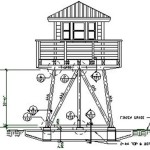Draw Floor Plans On iPad Free: A Comprehensive Guide
The iPad has emerged as a versatile tool for various professional applications, including architecture, interior design, and real estate. Its portability, intuitive interface, and powerful processing capabilities make it an ideal platform for creating and editing floor plans. This article explores the possibilities of drawing floor plans on an iPad using free applications, outlining the features, functionalities, and considerations involved in the process.
Creating floor plans traditionally involved manual drafting or expensive Computer-Aided Design (CAD) software. However, with the advent of mobile technology and the availability of free or freemium applications, drawing floor plans has become more accessible to a wider audience, including homeowners, renters, and small business owners who may not have the budget or technical expertise for professional software.
The appeal of using an iPad lies in its ease of use. The touch screen interface allows for direct manipulation of elements, making the drawing process more intuitive than using a mouse with traditional CAD software. In addition, its portability makes it easy to work on projects on-site, take measurements, and make immediate changes to the plan.
Identifying Suitable Free Apps for Floor Plan Creation
A multitude of apps are available for creating floor plans on the iPad. While many offer premium versions with advanced features, several provide sufficient functionality in their free versions to create basic, yet accurate floor plans. It is crucial to evaluate the features and functionalities of each app to determine its suitability for the specific needs of the user.
Floor plan creation apps generally offer a range of tools for drawing walls, inserting doors and windows, adding furniture, and annotating the plan. Some apps also integrate with laser measurement tools, allowing for accurate data input. The availability of pre-designed templates and libraries of symbols can streamline the drawing process.
Among the most popular free or freemium apps are RoomScan Pro (using the iPad's LiDAR scanner for quick room capture, although a paid subscription unlocks further features), Magicplan (which allows scanning rooms with the camera, but limited functionality is available in the free version), and various basic drawing apps that can be used creatively, although potentially less precisely, for floor plan creation. The "freemium" model usually offers essential features for free, but requires payment for advanced tools, exporting options, or increased storage.
Evaluation of these apps should involve considering the following aspects: the user interface and ease of navigation, the availability of essential drawing tools, the ability to import and export files in common formats such as PDF or JPG, the precision and accuracy offered by the app, and the availability of support resources such as tutorials and FAQs.
Utilizing Free App Features for Effective Floor Plan Design
Once a suitable app has been selected, understanding how to effectively utilize its free features is crucial to create accurate and visually appealing floor plans. Each app offers a unique set of tools, and efficient use of these tools can significantly affect the outcome of the project.
For instance, many apps provide tools for drawing walls with precise dimensions. Utilizing these tools accurately is crucial for reflecting the actual dimensions of the space. Similarly, correctly placing doors and windows is essential for ensuring proper functionality and flow within the plan. Many apps also offer pre-designed furniture symbols that can be easily inserted and scaled to accurately represent furniture placement within the space.
Furthermore, understanding the layering capabilities of the app can be beneficial for organizing the different elements of the plan. For example, walls can be placed on one layer, furniture on another, and annotations on a third. This allows for easy editing and manipulation of individual elements without affecting other parts of the plan.
The free versions of these apps may have limitations on features such as the number of projects that can be saved, the resolution of exported images, or the availability of advanced tools. However, for basic floor plan creation, the available features are often sufficient. Users can explore workarounds such as taking screenshots of the plan to overcome limitations on exporting options, or breaking down larger projects into smaller segments to stay within the limitations on the number of saved projects.
Beyond the drawing tools, annotations are a crucial element of the floor plan. Most apps allow users to add text, dimensions, and notes to the plan. Clear and accurate annotations are essential for communicating information about the space, such as room names, dimensions, and material specifications.
Taking advantage of any available grid systems or snapping features can also improve the accuracy of the drawing. These features help to align elements and ensure that walls are drawn at right angles.
Considerations and Limitations of Free iPad Floor Plan Apps
While free apps offer accessibility and convenience, it is important to acknowledge their inherent limitations compared to professional CAD software. These limitations can affect the accuracy, level of detail, and overall functionality of the created floor plans.
One common limitation is the precision and accuracy of the drawing tools. Free apps may not offer the same level of control and precision as professional CAD software. This can be a significant concern when creating floor plans for construction or renovation projects where accuracy is paramount.
Another limitation is the availability of advanced features such as 3D modeling, rendering, and building information modeling (BIM) capabilities. These features are typically only available in paid versions of the apps or in dedicated CAD software packages. For projects that require a high level of visualization or collaboration, the limitations of free apps may prove to be a barrier.
Storage space and file format compatibility are also potential limitations. Free apps may offer limited storage space, requiring users to manage their projects carefully or utilize cloud storage solutions. File format compatibility can also be an issue, as some apps may not support the export of files in common formats such as DWG or DXF.
Dependence on the iPad's hardware also needs consideration. The accuracy of features like LiDAR scanning used by some apps, although convenient, is subject to the hardware's capabilities. Lighting conditions and object reflectivity can impact the scanning results, potentially leading to inaccuracies in the generated floor plan.
Furthermore, relying on free apps comes with the risk of future updates that may change functionality, introduce paid features, or even discontinue the app entirely. Users should be aware of these risks and consider backing up their projects regularly.
Despite these limitations, free iPad apps can be a valuable tool for creating basic floor plans for various purposes. They are particularly useful for quick sketches, space planning, and preliminary design concepts. However, for projects that require high levels of accuracy, detail, or collaboration, it may be necessary to consider investing in professional CAD software or hiring a professional architect or interior designer.
Ultimately, the choice of whether to use a free iPad app for floor plan creation depends on the specific needs and requirements of the project. By carefully evaluating the features, functionalities, and limitations of available apps, users can make an informed decision and utilize these tools effectively to create accurate and visually appealing floor plans.

How To Draw An Interior Floor Plan On The Ipad

Draw Floor Plans With The Roomsketcher App

Draw Floor Plans With The Roomsketcher App

Draw Floor Plans With The Roomsketcher App

Draw Floor Plans With The Roomsketcher App

Drawplan On The App

Top 03 Floor Plan Creator For Iphone Ipad Free

Drawplan On The App

Free Floor Plan Layout Reviewed Greenhouse Studio

Roomsketcher On The App








